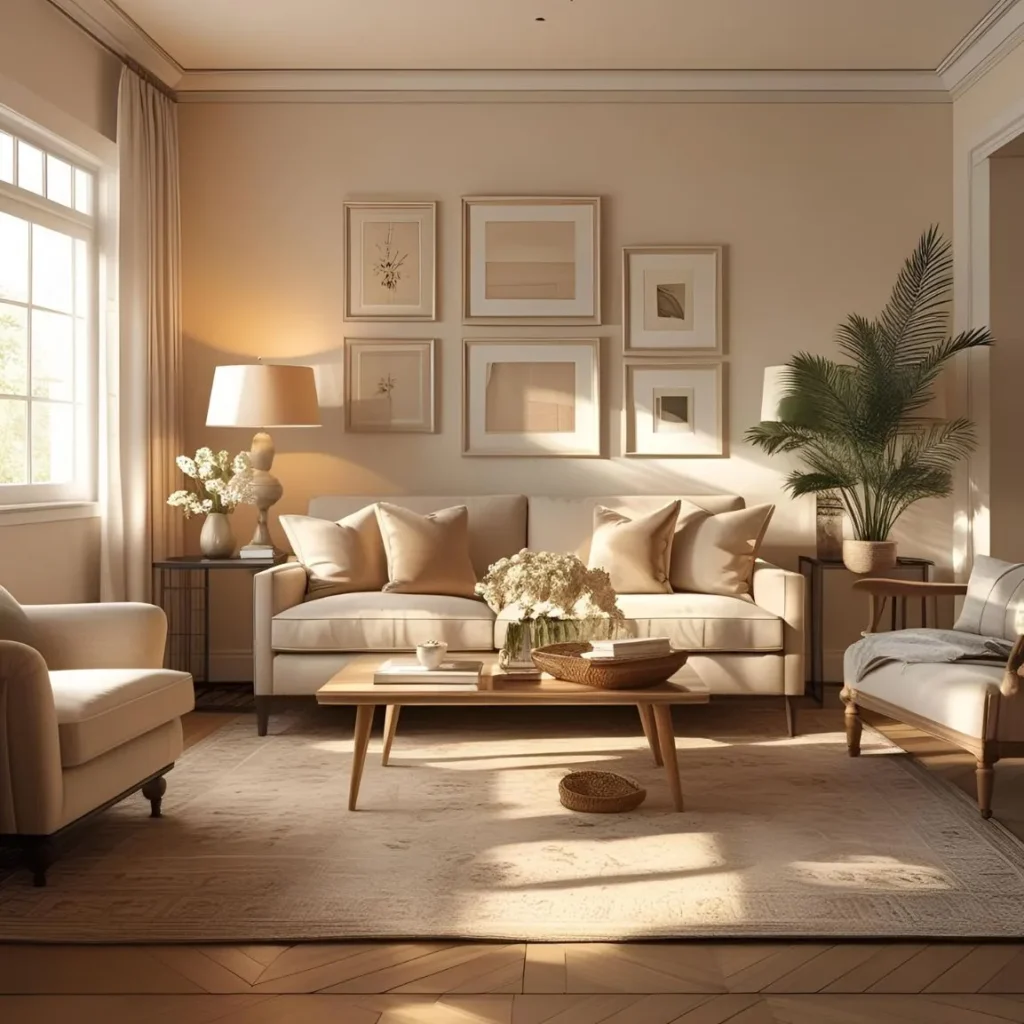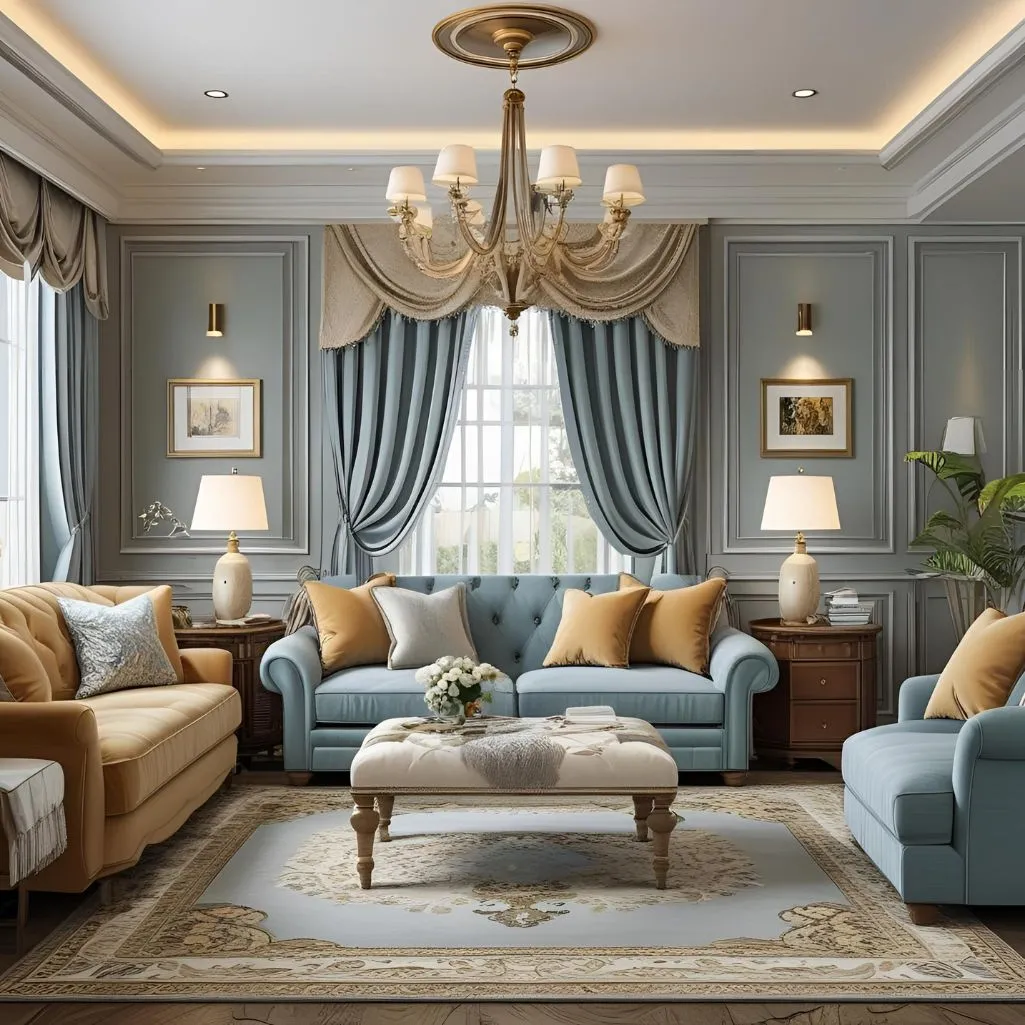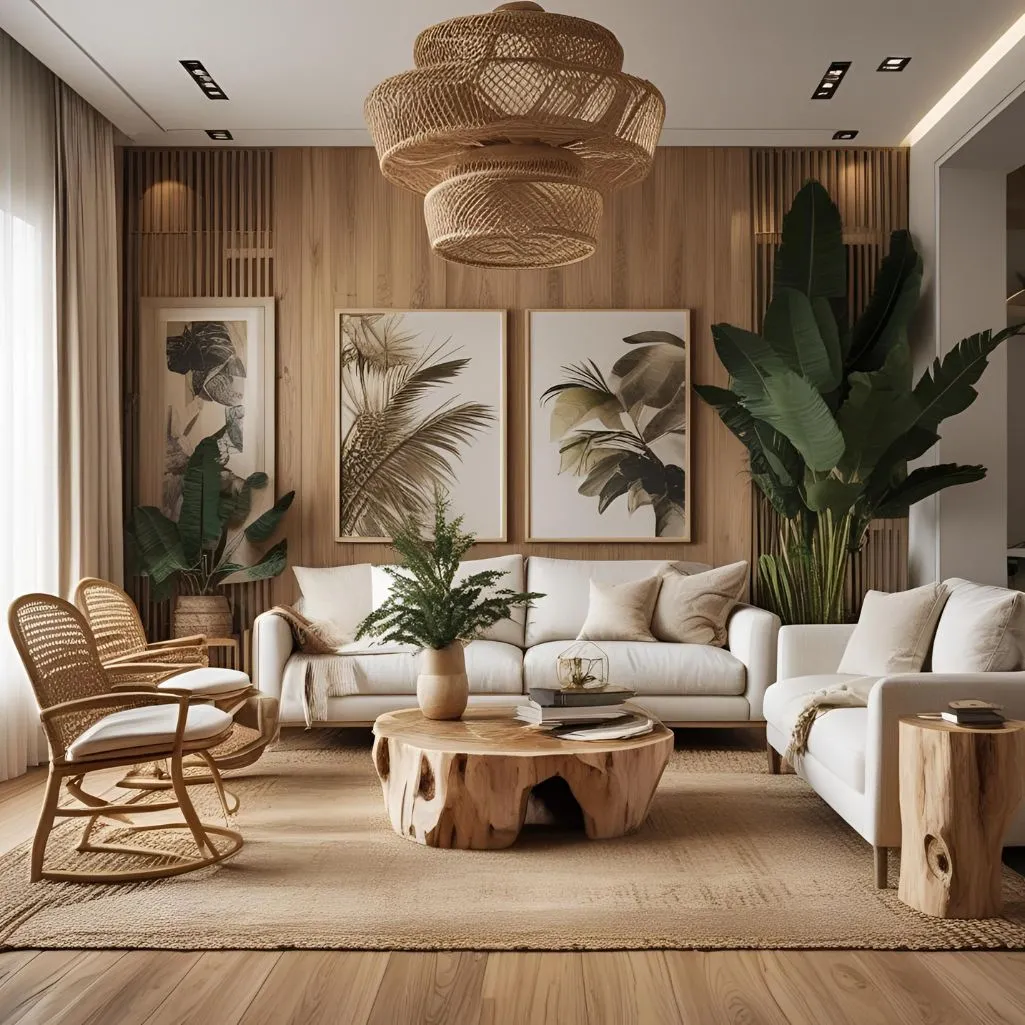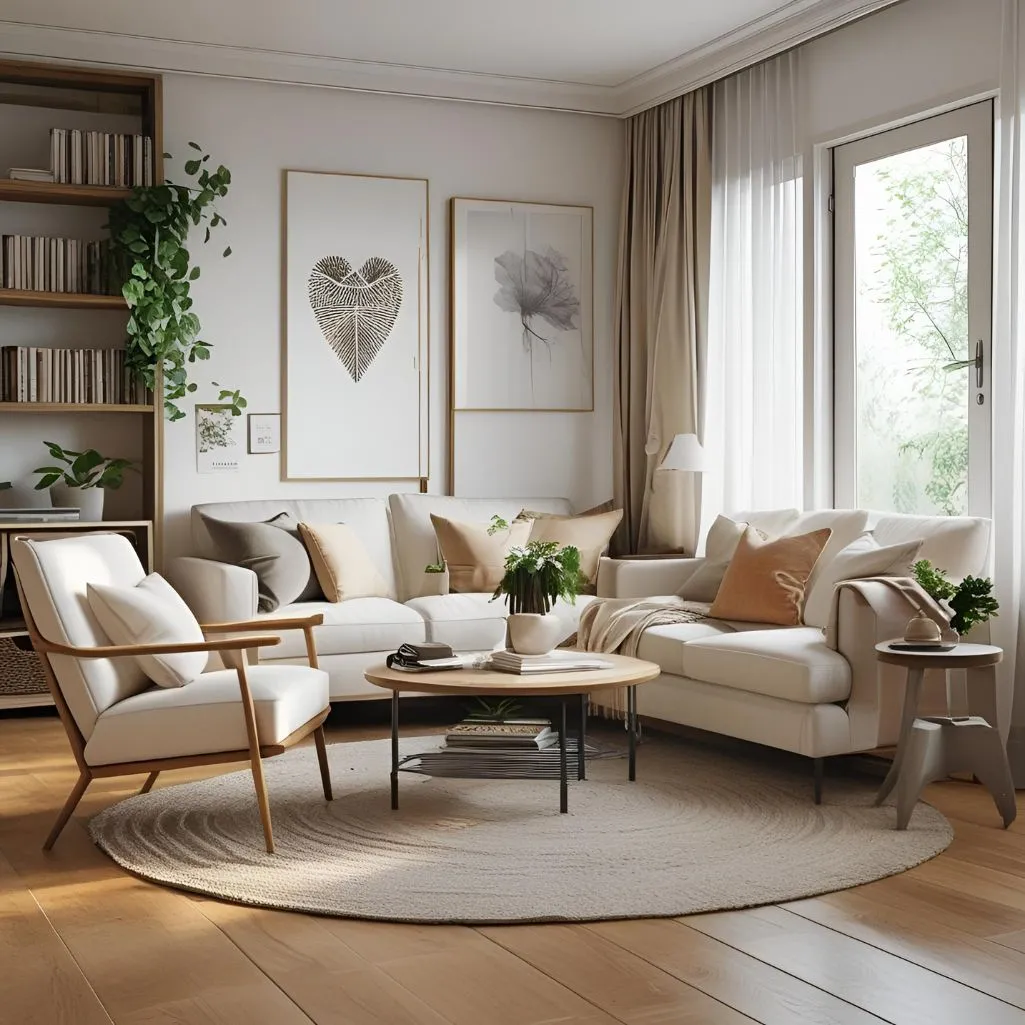Creating a cozy minimalist living room begins with a thoughtful selection of colours, textures, and furnishings. A neutral haven invites calmness, simplicity, and warmth, allowing you to experience comfort without clutter. The interplay of soft tones, natural materials, and subtle accents can transform your space into a sanctuary that balances serenity with style.
Minimalism is not about stripping away personality; it’s about curating a space that feels intentional, organised, and timeless. By carefully layering muted neutrals, incorporating organic textures, and introducing strategic pops of color, you can create a living room that is both inviting and visually dynamic. Thoughtful furniture placement, lighting choices, and decorative details enhance the sense of openness while fostering a warm, lived-in ambiance.
This guide explores the art of designing a minimalist living room that emphasises harmony, functionality, and aesthetic appeal. You will discover techniques for selecting ideal neutral palettes, integrating natural materials, balancing textured layers, and incorporating plants, metallic accents, and artful decor. When you’re redesigning a small urban apartment or refreshing a spacious family living room, these strategies will help you craft a neutral haven that exudes both elegance and comfort, making your space a true reflection of your personal style and lifestyle needs.
Understanding the Essence of a Neutral Haven
A neutral haven is more than just a color palette; it’s an approach to living that prioritizes balance, simplicity, and timeless elegance. By focusing on muted hues, natural textures, and carefully curated accents, you create a space that fosters relaxation, creativity, and mindful living.
- Calm Base Colors: Soft whites, warm creams, and muted taupes establish a soothing foundation.
- Layered Textures: Wool, linen, cashmere, and natural fibers add visual depth and tactile comfort.
- Balanced Accents: Thoughtful pops of color—like jewel tones in pillows or artwork—enhance energy without overwhelming tranquility.
A well-designed neutral living room should feel light-filled, airy, and cozy, offering both aesthetic appeal and practical comfort.
Choosing the Right Neutral Palette

Selecting a neutral palette involves more than picking a single shade. Successful palettes layer complementary tones to create depth and dimension.
Core Neutral Tones
- Creams and Off-Whites: Ideal for walls, ceilings, and upholstery to create a soft, welcoming backdrop.
- Muted Grays: Offer versatility and pair beautifully with wood accents.
- Taupes and Warm Beiges: Provide warmth and balance cooler neutrals for a cozy ambiance.
Layering for Depth
Layering neutrals is key to preventing a space from feeling flat or lifeless. Combine different textures, finishes, and subtle tonal variations:
- Soft fabrics: Linen curtains, wool throws, and cashmere pillows.

- Textured surfaces: Hand-knotted rugs, plastered walls, and woven baskets.
- Reflective elements: Satin metals or glass décor to catch natural light and create visual interest.
Tip: Use a 60–30–10 ratio—60% base neutral, 30% secondary neutral, 10% accent color—for perfectly balanced interiors.
Strategic Accent Colors
Even in a neutral living room, strategic color accents add personality and vitality without disrupting harmony.
- Jewel Tones: Sapphire blue, ruby red, and emerald green create a subtle yet impactful pop.
- Earthy Accents: Terracotta, burnt sienna, and olive green maintain the organic warmth of a neutral palette.
- Metallic Touches: Brass, copper, or gold accessories enhance elegance and reflect light.
Placement Tips for Accents
- Soft Furnishings: Pillows, throws, and rugs.
- Decorative Objects: Ceramics, vases, and bowls.
- Artworks: Statement paintings or framed prints that complement the neutral base.
Integrating Natural Materials

Natural materials anchor a minimalist living room with authenticity and warmth.
- Wood: Oak, walnut, or bamboo for floors, furniture, and shelving.
- Stone: Marble or limestone for coffee tables, countertops, and accent walls.
- Woven Fibers: Rattan, jute, or seagrass for storage, baskets, and lighting fixtures.
Tip: Sustainably sourced materials not only support eco-friendly living but enhance textural richness. Combining multiple materials creates layered depth while keeping the space grounded.
Optimizing Lighting for Cozy Minimalism
Lighting is crucial in a neutral haven. Proper illumination can transform a muted palette into a warm, inviting retreat.
Natural Light
- Maximize sunlight with sheer curtains or reflective surfaces.
- Position seating near windows to take advantage of daylight.
Artificial Light
- Ambient Lighting: Overhead soft lighting creates a warm, welcoming base.
- Accent Lighting: Table lamps, wall sconces, or LED strips highlight textures and focal points.
- Task Lighting: Reading lamps near chairs or sofas ensure functionality without sacrificing aesthetics.
Furniture Selection and Layout
In minimalist spaces, every piece counts. Prioritize comfort, proportion, and style:
- Low-Profile Sofas: Choose neutral-toned, plush seating that enhances spaciousness and coziness.
- Functional Tables: Coffee tables, side tables, and consoles in wood or metal with clean lines.
- Open Layout: Avoid overcrowding; leave breathing space to maintain an airy feel.
Arranging Furniture
- Group seating around a central focal point, like a fireplace or coffee table.
- Maintain clear circulation paths for functionality.
- Layer rugs and throws to define zones without clutter.
Adding Lush Foliage and Florals
Living plants breathe life into neutral spaces, adding texture, color, and air-purifying benefits.
- Easy-Care Plants: Spider plants, snake plants, and pothos.
- Statement Plants: Fiddle-leaf fig or bonsai for sculptural impact.
- Floral Arrangements: Seasonal blooms in ceramic vases for dynamic visual interest.
Placement Tips
- Cluster plants in varying heights to create natural rhythm.
- Place near light sources to promote growth and vitality.
- Rotate blooms and foliage to prevent visual monotony.
Textures: The Heart of Cozy Minimalism

Layered textures add tactile and visual richness without overwhelming simplicity.
- Soft Fabrics: Wool, alpaca, linen, and cashmere.
- Rugs: Hand-knotted, jute, or plush varieties for warmth underfoot.
- Throws and Pillows: Combine subtle patterns and tactile variations for comfort.
Tip: Mix matte and glossy surfaces for balance, like woven rugs against glass coffee tables.
Practical Tips for Maintenance
A neutral living room must be both beautiful and livable.
- Fabrics: Choose stain-resistant, washable covers for sofas and cushions.
- Wood: Regular dusting, polish, and protective pads prevent wear.
- Plants: Rotate and prune for consistent growth and aesthetic appeal.
- Metals: Polished brass or copper needs occasional gentle cleaning to maintain sheen.
Budget-Friendly vs. Luxury Approaches
Neutral havens can adapt to any budget.
- Budget-Friendly:
- Thrifted furniture painted in neutral tones.
- Affordable textiles like cotton and linen.
- DIY plant planters using recycled materials.
- Thrifted furniture painted in neutral tones.
- Luxury:
- Hand-knotted wool rugs, bespoke furniture, and designer lighting.
- Imported natural woods with premium finishes.
- Statement art pieces or metallic accents for sophistication.
- Hand-knotted wool rugs, bespoke furniture, and designer lighting.
Conclusion
Creating a cozy minimalist living room is about intentional design choices and thoughtful curation. By layering soft neutrals, natural materials, textured fabrics, and lush greenery, you create a space that feels warm, inviting, and effortlessly stylish. Subtle metallic accents, hand-crafted décor, and carefully placed art pieces can elevate the ambiance without overwhelming simplicity.
A neutral haven does not mean bland or sterile; instead, it serves as an elegant canvas for comfort, creativity, and mindful living. Thoughtful lighting, both natural and artificial, enhances the sense of calm and openness, while functional furniture and intelligent layout design ensure your space is as practical as it is beautiful.
By experimenting with layered textures, varying shades of neutrals, and seasonal touches, you can infuse personality and dynamic energy into your living room. With careful attention to detail, your minimalist space will not only reflect balance and serenity but also inspire daily moments of relaxation, focus, and aesthetic pleasure.

Hi, I’m James Whitman. With a knack for humor and charm, I focus on creating memorable and impactful rizz lines to level up your game.

